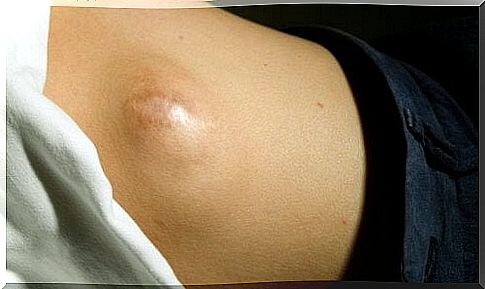What Is A Sarcoma?

When we talk about a sarcoma, we are talking about a type of cancer. In other words, it is an abnormal and malignant growth of cells in certain tissues in the body that multiply without control.
The tissues that give rise to sarcomas are the bone and the so-called soft tissues of the body. Among the soft tissues we can mention adipose, muscles, cartilage, blood vessels, among others.
In other words, a sarcoma is a cancer of the connective tissue. Its main feature is the fact that it has a lot of extracellular matrix between the cells that form it.
Sarcomas are not common. Among all types of cancer that affect humans, it is estimated that less than 1% are sarcomas. It accounts for just 2% of cancer deaths.
Although they can appear anywhere on the body, they are more common in the extremities, both legs and arms. They can also occur inside the cavity of the abdomen and even in the head.
The apparition age usually ranges between 40 and 70 years. Some varieties are characteristic of childhood and generally affect more men than women.
causes of sarcoma
As with many types of cancer, a specific cause of its origin cannot be established. However, it is assumed that a number of factors coincide for the tumor to develop and for the cells to grow uncontrollably.
In the case of sarcomas, it was not possible to establish clear risk factors for some varieties, which makes prevention more difficult. Scientific studies are being conducted to reach conclusions about these soft tissue tumors.
With experience and current research, it was possible to establish a few risk factors:
- Genetic diseases : there are diseases, such as neurofibromatosis, which, being congenital, have among their symptoms the proliferation of sarcomas.
- Radiotherapy: When a person undergoes radiotherapy as a treatment, either for thyroid problems or for cancer, it can have the adverse effect of developing soft tissue tumors.
- Virus: there are infections that increase the chance of suffering from sarcomas. Kaposi’s sarcoma, for example, is linked to a variety of herpes.
- Lymphedema: Lymphedema is the accumulation of lymph in the soft parts of the body. When this situation is prolonged over time and becomes chronic, tissues can proliferate in the form of a neoplasm.

Symptoms
Sarcomas are usually not painful unless they have advanced far enough to put pressure on some part of the body. Therefore, the diagnosis is difficult and suspicions take a long time to happen.
Another characteristic that determines the non-presentation of so many symptoms is that the cancer can be located in deep regions. In this way, as it is in depth, it takes a long time to become evident.
Perhaps the most common symptom is the appearance of a lump. In fact, this is often the signal that determines the query. The palpable nodule is not always due to the sarcoma itself, but it may be a surrounding inflammation caused by tumor growth.
Diagnosis and treatment of sarcoma
If the doctor suspects a sarcoma, they will order some imaging tests to start the diagnosis. He may order an ultrasound, an MRI or a CT scan.
If the images suggest the presence of a neoplastic process, the next step is a biopsy. With biopsy, a definitive diagnosis can be reached to confirm the sarcoma.

With a confirmed diagnosis, the therapeutic options are:
- Surgery: Many sarcomas can be surgically removed, solving the problem in this step.
- Radiotherapy: the application of radiation is usually a complement to surgery. In addition, if surgical removal cannot eliminate the lesion, radiotherapy is an indication.
- Chemotherapy: Chemotherapy is not always necessary for sarcomas. However, it is usually indicated for severe tumors or those with complicated locations.
- Immunotherapy: Relatively new, the use of biological drugs to fight cancer is promising. In short, immunotherapy seeks to stop the process by which tumor cells block the body’s immune response. However, they are expensive drugs and are not available worldwide.
Conclusion
The appearance of a nodule anywhere in the body should be treated as an alarm signal. Before him, it is necessary to consult a doctor so that the necessary and indicated complementary exams are carried out.
However, it is not a question of being alarmed at any volume under the skin, but of being aware. The delay in making an appointment can delay the diagnosis and hinder a treatment that could be fully effective for this type of cancer.









